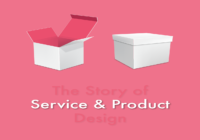Being able to understand behavioral patterns gives an important edge to a designer or a team. It also creates a fertile environment for ideas to develop. Not just human behavior, but also social, technical, environmental, political and economic systems must be studied and understood. We increasingly see ill-defined problems related to the inner-workings of these systems. Understanding the behaviors of these systems gives two key insights to designers. First, it creates a sense of action that can lead to empathy towards the subject matter. Second, it provides clues about the norms and patterns of the mechanics of the system.
Culture becomes a defining system when we look a layer deeper than the behavioral patterns of groups. Culture is an important factor in the life of a designer because it forms out of the relationships that we build with each other, the things that are in our possessions, our routines, point-of-views and beliefs. Sometimes the elements that make up that culture are invisible to us due to their obvious nature and familiarity. However, by asking simple questions that are directed toward these elements, a designer can stumble upon valuable insights through unexpected answers. Under a certain context, a designer can reflect these insights to ideas and, influence certain nuances within their designs.
A context is like an ecosystem where the behaviors come to existence and, where culture is shaped. The key defining elements, which are called touchpoints, are important mechanisms in identifying the boundaries the ecosystem; for example, a positive intersection between a customer and a service provider during the use of a service or a product, is considered as a touchpoint. The knowledge of what steps that a customer goes through during the use of a service, which obstacles they face and how they overcome them provide designers novel contextual insights. By first-hand experiencing this ecosystem, the thought process of the designer will be much more immersive than simply designing from outside.
Faulty problem definitions, short project timelines, and impatience are conditions that designers often find themselves in, and these conditions may provide incorrect solutions. Conducting research requires a certain level of comfortability with the uncertainty, which is prevalent during the early stages. This acceptance brings a sort of clarity to uncertainty. This is generally done by a process called synthesis, which is the process of reducing the raw data to digestible chunks in order to discover the themes and patterns within the data. This is the clarification process that allows the designers to focus on the right part of the problem at the right time. This may be the key part of a project that requires to be discussed in depth.
Design research is not a science, nor should it be confused with a scientific process. It is an abductive process. It allows designers to gain a very nuanced understanding of their target audience. Design research may not always provide verifiable facts about the world; however, it will provide solution-oriented, feasible, and highly usable, customer oriented ideas for its practitioner.
If you have questions or comments you can contact with us.




